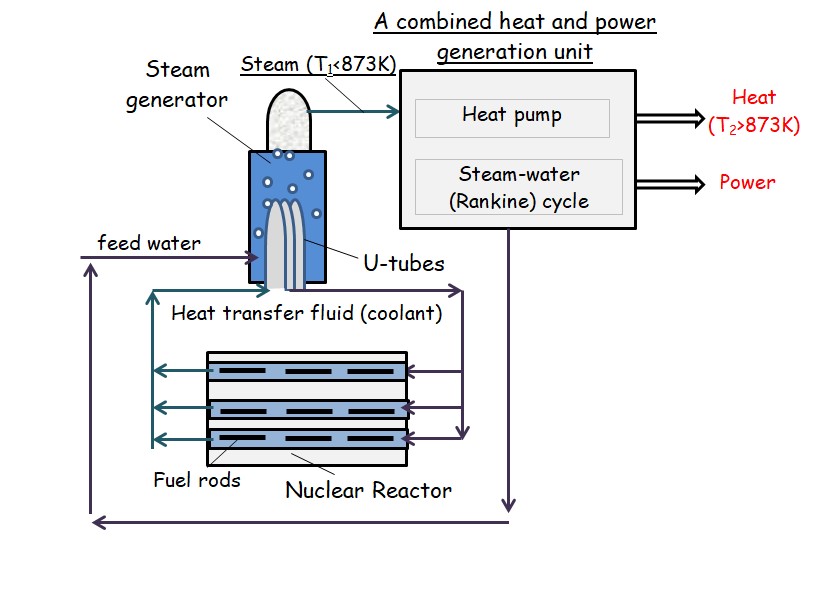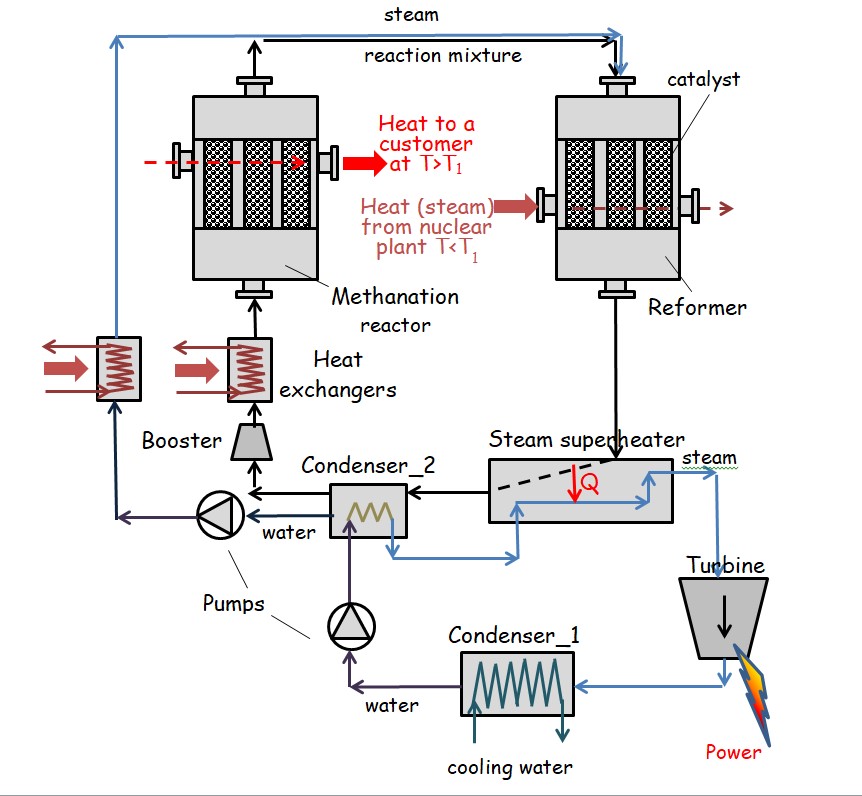A chemical heat pump to generate high-temperature heat at a temperature hotter than the original source
Please, see [5] for details and mass and energy balances
Heat Q (T1 < 873K) is suplied by a nuclear reactor
 Increasing steam temperature by elevating the coolant temperature higher than
Increasing steam temperature by elevating the coolant temperature higher than
an established limit is detrimental to the nuclear reactor safety
Heat Q(T > T1) is generated in Methanation Reactor and Q(T < T1) consumed in Reformer due to
a shift in chemical equilibrium by an excess of steam
 Reaction mixture: H2, CO, CH4, H2O
Reaction mixture: H2, CO, CH4, H2O
Methanation reactor: 3H2 + CO → CH4 + H2O (steam) + Heat released (at T > T1 )
Reformer: CH4 + H2O (excess) → 3H2 + CO + Heat consumed (at T < T1)
 Increasing steam temperature by elevating the coolant temperature higher than
Increasing steam temperature by elevating the coolant temperature higher than  Increasing steam temperature by elevating the coolant temperature higher than
Increasing steam temperature by elevating the coolant temperature higher than  Reaction mixture: H2, CO, CH4, H2O
Reaction mixture: H2, CO, CH4, H2O